Myxoma Virus dsRNA Binding Protein M029 Inhibits the Type I IFN-Induced Antiviral State in a Highly Species-Specific Fashion
- PMID: 28157174
- PMCID: PMC5332946
- DOI: 10.3390/v9020027
Myxoma Virus dsRNA Binding Protein M029 Inhibits the Type I IFN-Induced Antiviral State in a Highly Species-Specific Fashion
Abstract
Myxoma virus (MYXV) is Leporipoxvirus that possesses a specific rabbit-restricted host tropism but exhibits a much broader cellular host range in cultured cells. MYXV is able to efficiently block all aspects of the type I interferon (IFN)-induced antiviral state in rabbit cells, partially in human cells and very poorly in mouse cells. The mechanism(s) of this species-specific inhibition of type I IFN-induced antiviral state is not well understood. Here we demonstrate that MYXV encoded protein M029, a truncated relative of the vaccinia virus (VACV) E3 double-stranded RNA (dsRNA) binding protein that inhibits protein kinase R (PKR), can also antagonize the type I IFN-induced antiviral state in a highly species-specific manner. In cells pre-treated with type I IFN prior to infection, MYXV exploits M029 to overcome the induced antiviral state completely in rabbit cells, partially in human cells, but not at all in mouse cells. However, in cells pre-infected with MYXV, IFN-induced signaling is fully inhibited even in the absence of M029 in cells from all three species, suggesting that other MYXV protein(s) apart from M029 block IFN signaling in a speciesindependent manner. We also show that the antiviral state induced in rabbit, human or mouse cells by type I IFN can inhibit M029-knockout MYXV even when PKR is genetically knocked-out, suggesting that M029 targets other host proteins for this antiviral state inhibition. Thus, the MYXV dsRNA binding protein M029 not only antagonizes PKR from multiple species but also blocks the type I IFN antiviral state independently of PKR in a highly species-specific fashion.
Keywords: Myxoma virus; M029; Poxvirus; dsRNA binding protein; type I IFNs, antiviral state.
Conflict of interest statement
The authors declare no conflict of interest.
Figures
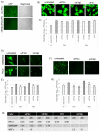

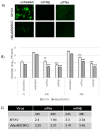

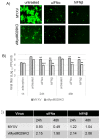

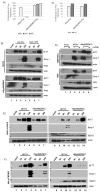
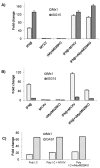
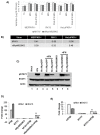
Similar articles
-
Myxoma virus protein M029 is a dual function immunomodulator that inhibits PKR and also conscripts RHA/DHX9 to promote expanded host tropism and viral replication.PLoS Pathog. 2013;9(7):e1003465. doi: 10.1371/journal.ppat.1003465. Epub 2013 Jul 4. PLoS Pathog. 2013. PMID: 23853588 Free PMC article.
-
Myxoma Virus-Encoded Host Range Protein M029: A Multifunctional Antagonist Targeting Multiple Host Antiviral and Innate Immune Pathways.Vaccines (Basel). 2020 May 23;8(2):244. doi: 10.3390/vaccines8020244. Vaccines (Basel). 2020. PMID: 32456120 Free PMC article. Review.
-
Myxoma virus M156 is a specific inhibitor of rabbit PKR but contains a loss-of-function mutation in Australian virus isolates.Proc Natl Acad Sci U S A. 2016 Apr 5;113(14):3855-60. doi: 10.1073/pnas.1515613113. Epub 2016 Feb 22. Proc Natl Acad Sci U S A. 2016. PMID: 26903626 Free PMC article.
-
RNA Helicase A/DHX9 Forms Unique Cytoplasmic Antiviral Granules That Restrict Oncolytic Myxoma Virus Replication in Human Cancer Cells.J Virol. 2021 Jun 24;95(14):e0015121. doi: 10.1128/JVI.00151-21. Epub 2021 Jun 24. J Virol. 2021. PMID: 33952639 Free PMC article.
-
The interferon system and vaccinia virus evasion mechanisms.J Interferon Cytokine Res. 2009 Sep;29(9):581-98. doi: 10.1089/jir.2009.0073. J Interferon Cytokine Res. 2009. PMID: 19708815 Review.
Cited by
-
The Role of Myxoma Virus Immune Modulators and Host Range Factors in Pathogenesis and Species Leaping.Viruses. 2025 Aug 21;17(8):1145. doi: 10.3390/v17081145. Viruses. 2025. PMID: 40872858 Free PMC article. Review.
References
-
- Werden S.J., Rahman M.M., McFadden G. Poxvirus host range genes. Adv. Virus Res. 2008;71:135–171. - PubMed
Publication types
MeSH terms
Substances
Grants and funding
LinkOut - more resources
Full Text Sources
Other Literature Sources

